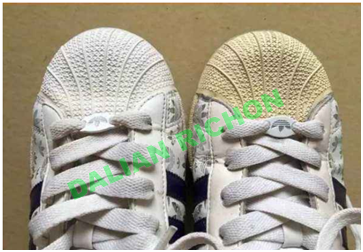Yellowing of Rubber
By DALIAN RICHON CHEM | Posted: 5/31 , 2024

Rubber yellowing is a manifestation of rubber aging, mainly caused by the following reasons:
- Aging reaction: During the use or storage of rubber, it is affected by the action of heat energy, light energy, radiation energy, as well as oxygen, ozone, water and variable metal, which leads to the breakage and cross-linking reaction of rubber molecular chains, and then causes aging, manifested as yellowing, hardening, brittleness and so on.
- Ultraviolet radiation: ultraviolet light can cause the cracking of carbon-carbon bonds or carbon-hydrogen bonds in the rubber molecular chain, resulting in a concentration of activity, leading to degradation of the molecular chain, resulting in yellowing.
- The role of heat and oxygen: over time, rubber materials will undergo oxidation reactions, and heat will accelerate this process, resulting in material discoloration.
- Rubber structure: There is a bond energy between polymer macromolecular chain bonds, and when the energy provided by the outside world is greater than the bond energy, the molecular chain is prone to activity concentration, leading to degradation and yellowing.
- Impurities and metal ions: If there are trace metals and impurities such as NO-3 in silicone rubber, it may cause yellowing after secondary vulcanization.
- Vulcanization process: silicone rubber in the vulcanization process, if the vulcanization temperature is too high or the time is too long, it will lead to the oxidation of the vinyl in the rubber compound, forming conjugated diolefin compounds, so that the silicone rubber turns yellow.
- Reaction container impurities: In the process of rubber reaction, the reaction container may introduce trace metal impurities, such as iron, chromium, etc., which may also lead to yellow silicone rubber.
- Rubber spray frosting: Compounding agents in rubber products, such as sulfur, accelerators, antioxidants, etc., if the amount exceeds the solubility in the rubber, it will migrate from the inside of the rubber to the surface and precipitate, resulting in frosting phenomenon, which may also cause yellowing.
- Rubber formulations: Certain additives used in rubber formulations, such as antioxidants, plasticizers, etc., may produce color changes during the aging process.
In order to prevent rubber from turning yellow, the following measures can be taken:
Optimize rubber formulation and use additives with better aging resistance.
Control vulcanization temperature and time to avoid excessive vulcanization.
Use anti-UV agents and antioxidants to reduce the effects of light and oxygen.
Keep rubber products stored in a suitable environment to avoid high temperature and direct sunlight.
The use of appropriate packaging and storage conditions to reduce the impact of external factors on rubber.
Through these methods, the process of rubber aging and yellowing can be delayed and the service life of rubber products can be extended.
Richon chem is a professional rubber additives supplier. Our products have been exported to 76 countries. If you want to purchase rubber additives from us, please click on the website and contact us. We’ll share you more information.
Website: https://www.richon-chem.com/
E-mail: info@richon-chem.com
